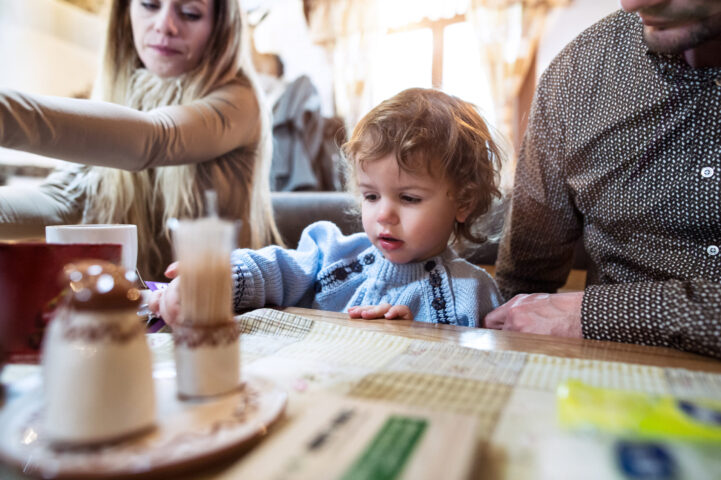It’s happening again! You’re running errands with your children and suddenly you’re stuck—in traffic, at the clinic, in the checkout line. Many parents find that playful learning activities can help reduce children’s impatience when they have to wait. So don’t just wait—investigate!
You can help your child to start thinking like a young scientist by…

Taking Notice.
Scientists pay attention to what is around them. Invite your child to listen, look, touch, taste, and smell with you! View the world together through magnifiers or listen through cardboard tubes. If it is safe to do so, you and your child can touch the plants, rocks, and other items around you. Tell each other what you notice, or make drawings. Not much to see? Study textures of your clothes or each other’s hands.
Making observations can also be a game! Look for ten seconds at what is around you, then cover your eyes and say what you recall. Your child can check to see if you have remembered correctly. Then switch roles. Or ask your child to pick something nearby that interests her, and then list several traits together.
Making Connections.
Scientists look for cause and effect in the things that change in the world around us. You might talk with your child in ways that help her think about connections. Ask her to think about why things happen. Share your ideas about what you observe. What makes that tree seem to bend over and straighten up again and again? What attracted so many birds to the park today? What allows the bus to bend in the middle?
Making Constructions.
Putting things together is important in science! You might keep small building toys, nuts and bolts, or puzzles in a purse or backpack. Which pieces fit together and why? How many different shapes can your child make with those pieces? You and your child can also examine building materials around you. What holds bricks together? Where do those pipes lead? Your child might plan to build a model at home based on what you see.
Making Guesses and Checking Them.
Scientists make predictions. You and your child can, too! How long will the car wash take? Where will that squirrel jump next? You might carry a bag of small objects (pebbles, seeds, wheel toys) your child can use to make and test predictions. “Will that seed move when you blow on it?” “Which pebbles will sparkle in sunlight?” Remember that such investigations are best when they don’t disturb others.
Exercising Your Imaginations.
Scientists need to think creatively. “Wondering out loud” is a great way to invite your child to think about questions that don’t have just one right answer. “What if we were small as mice?” “I wonder how we could find out how a bicycle works.”
Seeking More Information.
Your child can find answers to her questions in picture books about science. You might keep a few in your purse or backpack to share when you wait with children.


 Printer-friendly PDF
Printer-friendly PDF Printer-friendly PDF
Printer-friendly PDF